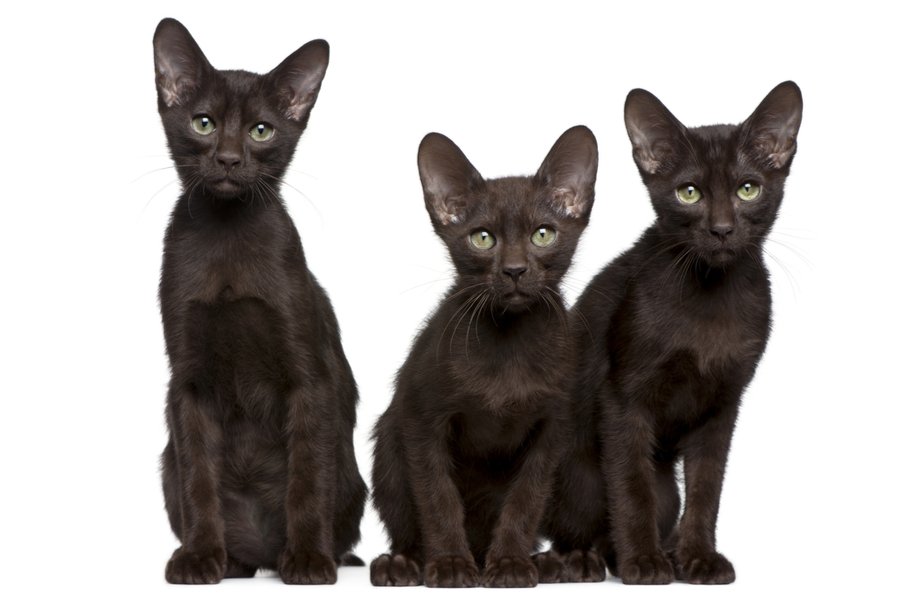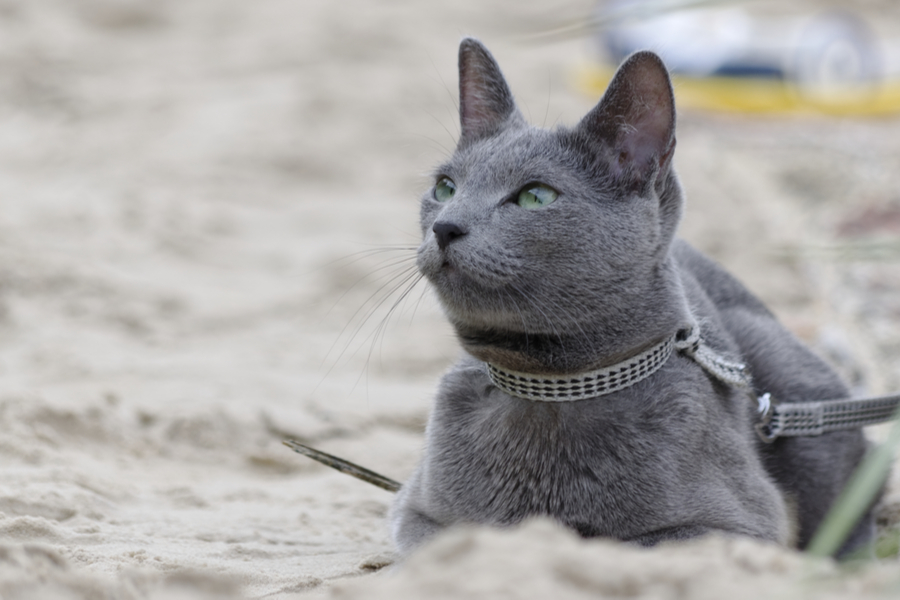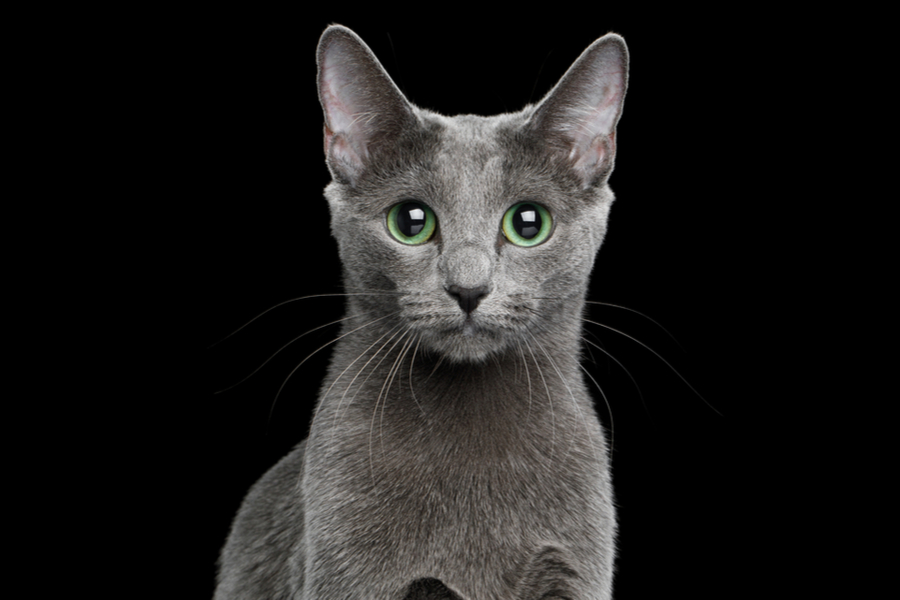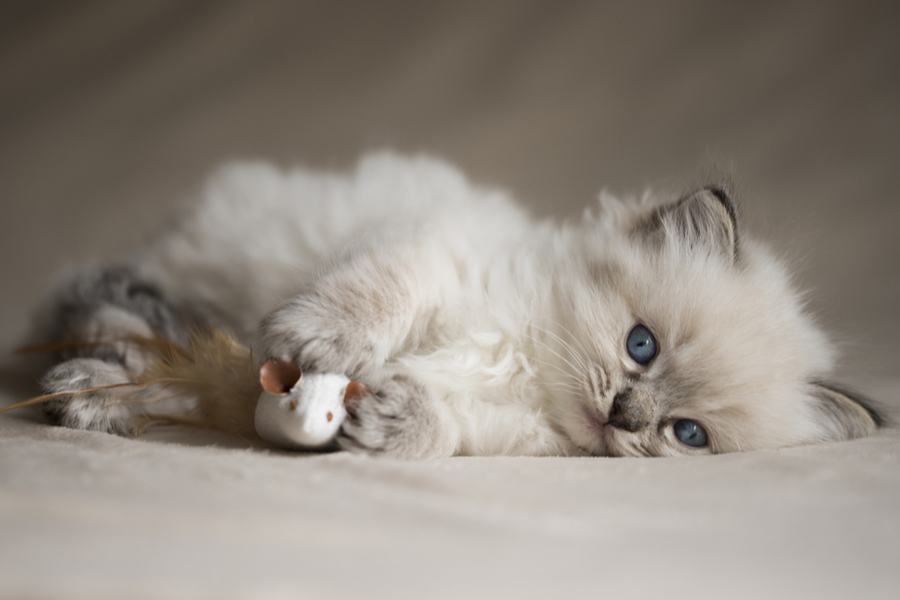Average sizes and life expectancy for this breed:
Havana Brown lovers and enthusiasts frequently use the phrase “Chocolate Delights” to describe this gorgeous chocolate brown cat with mesmerising green eyes. These cats are alert, intelligent, highly affectionate and rarely exhibit mischievous personality. A cat breed for the true cat enthusiast, many cat owners and lovers say that once you have been “owned” by this beautiful cat breed, no other breed will do.
Having a Havana Brown in your home is both a pleasure and a privilege. All you need to provide to make them happy and content is interaction and companionship. Some Havana Brown are somewhat reserved, while others are outgoing, talkative and playful, depending on how they were raised. They get along well with families with children, other cats and dogs. Because they crave human companionship, a Havana Brown will insist on being a part of everything that is happening in the household.
This cat breed is considered moderately active when compared to other shorthair breeds. But they love to sprint around the house or play a game of tag if there are other cats to play with. Aside from playing, Havana Browns love to nap. Of course, their choice of a sleeping partner is their favourite human companion.
The Havana Brown is a stunning cat with a rich mahogany coat highlighting their brilliantly green eyes. Their short, smooth, rich red-brown coat showcases this sophisticated cat's graceful lines while their expressive green eyes glow with intelligence. Some believe it is named for its similarity to the Havana cigar's rich colour, while others thought the name came from the Havana rabbit. These calm cats are playful members of the family and always curious about everything that is happening in their surroundings.
See available kittens




Though brown cats were displayed in England as early as the 1800s, a group of British cat fanciers developed the rich brown feline we call the Havana in the early 1950s. Baroness Miranda Von Ullman, Mrs. Anne Hargreaves and Mrs. E. Fisher bred chocolate point and seal point Siamese cats with solid black domestic shorthair cats and a dash of Russian Blue cats to produce the chocolate cat breed.
The first registered Havana Brown cat was Elmtower Bronze Idol, whose parents were a seal point Siamese and a black shorthair. In the mid-1950s, Mrs. Elsie Quinn contacted Baroness Von Ullman and transported the first Havana Brown cats to the United States to form the foundation for the Havana Brown cat breed in North America.
In 1958, the new cat breed was recognized by GCCF (Governing Council of the Cat Fancy) as the Chestnut Foreign Shorthair cat and by Cat Fanciers Association in 1959. This name was later changed to Havana.
Now, there is a substantial difference between the English Havana cats and those seen in The International Cat Association. The English cats are more oriental in type, succeeding a development like other colours of Foreign (or Oriental) Shorthair cats, with straight profiles, flared ears and wedge-shaped heads.
If there were a list of endangered cat breeds, the Havana Brown would be on the top of its list. This cat breed is very rare and currently, many cat breeders are attempting to save this gorgeous breed from extinction. An outcrossing program begun in 1998, which allows the cats to be bred to unregistered black or blue domestic shorthairs or certain colours of Oriental Shorthairs or chocolate-point or seal-point Siamese.
The kittens produced through the outcrossing program can then be bred to Havana Browns. If those kittens have the Havana Brown colouring, they can be registered as Havana Browns. However, note that if this happens, the cat will have another breed in its pedigree that may affect their personality, habits and their appearance.


The sophisticated Havana Brown comes in two colours, pinkish grey or lilac and rich mahogany red-brown with matching whiskers. These colours provide a unique backdrop for their brilliant green oval eyes glittering with intelligence and playfulness. Their stunning oval green eyes are remarkable and unforgettable. Any even shade of green is recognized; In fact, the greener, the better.
The rich coloured, silky coat covers a medium-sized, semi-foreign body. Their body has a firm, agile muscular structure that ripples under their glossy brown coat. When picking up a Havana Brown for the first time, you’ll be surprised that this feline is heftier than it appears to be. Male Havana Browns are proportionally larger than their female counterparts.
While Havana Brown's rich tobacco colour is what we see first, their head is unique and distinctive as well. Their erect, forward-tilted ears portray a sense of alertness. The Havana cat’s profile consists of a series of straight lines that highlight the prominent stop. Their muzzle is frequently described as having a corn-cob appearance or a rolled cigar shape. This unique appearance is created by a pinch at their muzzle and full whisker pads combined with their square chin, making a blunt rounded appearance to their muzzle.
Havana kittens are born lilac or brown but may have ghost tabby markings that fade when they reach adulthood. These lively cats retain their kittenish playfulness and will be cherished feline companions if you decide to share your home with one.
Havana Browns are a curious, playful, people-oriented cat breed. They want lots of love and attention from their human companion, of which they will return with boundless affection. With this breed, it's not uncommon to see them stretch their paw out to get your attention. That same paw will also be used to investigate objects that catch their curious eye.
This inquisitive, intelligent cat adapts to most environments and situations and will come running to inspect a knock at the door or a crash in your kitchen. Because of their Siamese lineage, Havana Browns can have a tendency to be talkative and demanding. But their voice is softer and gentle, and their nature is more subtle than their Siamese cousins.
They are also smart and enjoy the challenge of puzzles and interactive toys. When they finish playing, this loving and affectionate cat breed will giddily conceal themselves in their human companion’s lap. The richly coloured Havana cat is a perfect companion if you are looking for a loving, intelligent feline companion who wants to be a part of everything you do.


Havana Browns are an intelligent and curious cat breed. Feed their minds by keeping them mentally stimulated through interactive toys and puzzles. Because they enjoy human interaction, take advantage of this by training your Havana Brown.
Start teaching them while they are young by training them to do simple tasks such as using the litter box and the scratching post. As they mature, keep their mind stimulated by teaching them games, tricks and commands. Don’t forget to reward them when they perform a trick, follow a command or simply behave well throughout your training session.
Remember, just like other cat breeds, when a Havana Brown is properly socialised, trained or familiarised to different animals, people and environments during their kittenhood, they will grow and thrive into being a well-behaved, well-rounded feline companion.
While minimal grooming and maintenance are needed for the Havana Brown, you can still create a regular grooming routine. Most Havana Browns love attention and will cheerfully submit to a full body rub down with a soft rubber brush. You can use a chamois for an overall rubdown to keep their coat shiny, too.
As a kitten, train your Havana Brown to get used to regular grooming. Start brushing or combing their coat with a very soft brush that will not pull their kitten hairs or hurt their skin. As they grow and mature, they will need more age-appropriate tools to cater to their coat needs.. As part of their training, remember to reward your Havana Brown if they behave well during the grooming session.
To keep your Havana Brown’s ears free from infection, clean them weekly to remove any dirt or wax buildup. Use clean cotton balls and an ear cleanser to wipe it out. It is best to ask for tips and advice from your vet to clean your cat’s ears effectively and avoid hurting them. Should you notice any foul odour coming out of their ears, book an appointment with your vet as this may be an indication of an infection.
For clean and healthy eyes, check them regularly for any stain, dirt or discharge. Use a fresh, soft cloth to clear away any discharge or stain in their eyes. Be careful not to poke their delicate eyes and make sure to use a separate part of the fabric for each eye.
Weekly tooth brushing is adequate to keep your Havana Brown’s teeth healthy and free from any tartar buildup and tooth and gum diseases. To keep their nails clean, you can trim them using a vet-approved clipper twice a month or when it is needed.
For their bathroom hygiene, make sure to keep their litter boxes clean. Havana Browns, like other cat breeds, are very picky about where they do their business. Not only will a dirty litter box make them use different places in the household, but dirty clumped litter may cling to their gorgeous coats and result in mats and tangles.
Lastly, it is recommended to keep your Havana Brown as an indoor cat. Because of the rarity of their breed, they are prone to being snatched by strangers. Moreover, if they are permitted to go outdoors unaccompanied, they may get diseases from other animals that roam free in the area.


Havana Browns are generally a healthy cat breed with no known genetic conditions. However, some may be prone to upper respiratory infections when they are young or developing calcium oxalate stones in the urinary tract, but neither of these are common.
Regardless, you should only buy a Havana Brown from a reputable and registered cat breeder who runs DNA health checks on the cats.
Because of their intelligence and being easy to train, Havana Browns make an excellent feline companion for families with children and other pets. They are playful and affectionate, which can match the energy of children. Just make sure to supervise younger kids when interacting with your Havana Brown. This way, you can avoid any mishaps and incidents that may hurt the child or the cat.
Living with other pets, such as cats and cat-friendly dogs, is actually recommended when you have a Havana Brown. They love companionship, whether with a two-legged or a four-legged companion and will entertain themselves by playing with other pets in the house. Make sure, though, to introduce them gradually and in a controlled environment to help them get along well together.


We can connect you with Breeders that are specialized in this particular breed.
See available kittens
Thailand
Size : Medium
Coat : Short
Registration : GCCF, TICA, CFA, FIFe
Vocality : High
Hypoallergenic : Yes
Grooming : Once a Week

United States of America
Size : Medium
Coat : Long
Registration : GCCF, TICA, CFA, FIFe
Vocality : High
Hypoallergenic : Yes
Grooming : Twice a Week

United States of America
Size : Medium
Coat : Short
Registration : GCCF, TICA, CFA, FIFe
Vocality : High
Hypoallergenic : Yes
Grooming : Once a Week

Thailand
Size : Medium
Coat : Short
Registration : GCCF, TICA, CFA, FIFe
Vocality : High
Hypoallergenic : No
Grooming : Once a Week


Need some advice?
Whether you're a first time pet owner, an experienced pet owner, a new or long-time breeder, or just curious about pets, we've got you covered!

January 17, 2024
What Is The Personality Of Russian Blue Cats?
Russian Blue cats are most known for their distinctive shimmery blue-silver coat and piercing green eyes. However, this breed’s calm and gentle temperament is what makes them shine the most in the feline world.

January 17, 2024
10 Facts About Russian Blue Cat Breed
Russian Blues are one of the most aesthetically stunning cat breeds, with a gorgeous plush silvery coat and vibrant green eyes. However, it’s not only their appearance that is beautiful; their nature is too.

January 17, 2024
How To Choose The Right Cat Breed for You
Cats can make the most fantastic animal companions; they are adorable, friendly, and loving. However, not all felines are created equal. There are many different breeds, of which each has its unique personality traits.
Need some help?
Contact us to speak to our friendly advisor, who will gladly help you find your dream pet!



We are registered in England and Wales under registration number 12568840,
and our registered office is at 58-60 Kensington Church Street, W8 4DB London, England.
© 2023 The Pedigree Paws